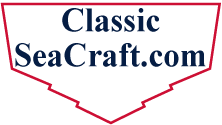| Blue_Heron |
03-01-2014 11:44 AM |
Quote:
Originally Posted by dave2400
(Post 225141)
...from looking at the brackets on here that the likes off outhers on here have made it looks thay slant from the transom to transom what is that slant allso how deep is the v in the bottom....
|
The geometry of the bracket will be dictated by the geometry of your boat, so it may not be the same as for a Seacraft. For the fore and aft angles, measure the angle between your keel and transom. For the deadrise, you will also want to match your hull.
You can use plywood and glass construction if you like, but you really should use epoxy resin if you go that route. If you use strick's one-off mould method, you can use less expensive polyester resin, you'll have much less fairing to make it look professionally done, and it will be lighter and stronger. The method is tried and true, whereas the plywood/glass approach is a reinvention of the wheel unless you have a professionally designed solution.
Dave |

